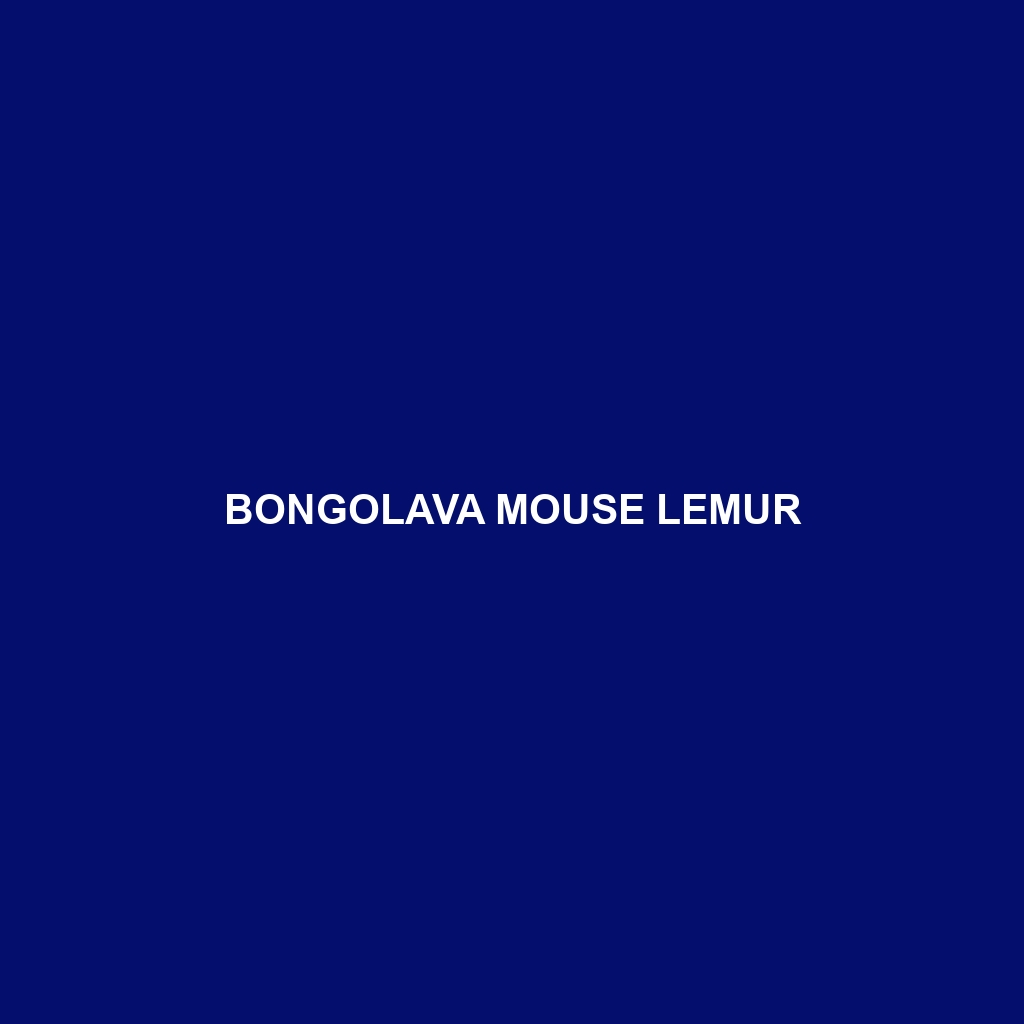Bongolava Mouse Lemur – A Fascinating Primate Species
Common Name: Bongolava Mouse Lemur
Scientific Name: Microcebus bongolavensis
Habitat
The Bongolava Mouse Lemur is predominantly found in the eastern rainforests of Madagascar, particularly within the Bongolava region. These unique primates thrive in dense, humid forests where they can take advantage of the lush foliage and abundant insect life. Their habitat is characterized by a rich biodiversity and a dense canopy that provides safety from predators.
Physical Characteristics
The Bongolava Mouse Lemur is a small, nocturnal primate that measures approximately 24 to 27 centimeters in length, with a tail that is nearly twice its body length. Their fur is typically a soft grayish-brown, with a lighter underside. Notable physical features include large expressive eyes adapted for night vision, and a distinctively pointed snout. Their small size and agile limbs make them exceptional climbers, well-suited for a life in the trees.
Behavior
Bongolava Mouse Lemurs are primarily nocturnal, displaying a range of behaviors that are captivating to observe. They are social animals that often live in small groups, engaging in vocal communications and grooming rituals. During the night, they become active foraging for food and exploring their arboreal habitat. Their agility and keen senses make them adept at avoiding predators, while their playful nature often sparks interest among researchers and wildlife enthusiasts alike.
Diet
The diet of the Bongolava Mouse Lemur consists primarily of fruits, flowers, and insects, showcasing their omnivorous feeding habits. They play a crucial role in seed dispersal due to their fruit consumption, which aids in the health of their ecosystem. Additionally, they may consume sap and nectar, further enriching their diet and supporting their high metabolism.
Reproduction
Bongolava Mouse Lemurs exhibit seasonal breeding behaviors, typically mating during the dry season from September to December. The females give birth to one or two offspring after a gestation period of approximately 60 days. Mothers are known to be nurturing, often carrying their young on their bellies or backs. The offspring are weaned after about two months and gradually become more independent.
Conservation Status
The Bongolava Mouse Lemur is currently classified as **endangered** due to habitat destruction and fragmentation as a result of deforestation and agricultural expansion. Conservation efforts are crucial in preserving their natural habitat and ensuring the survival of this unique Malagasy species.
Interesting Facts
One fascinating aspect of the Bongolava Mouse Lemur is its remarkable ability to leap distances of over three meters between trees, which is essential for escaping predators. Additionally, these primates have a relatively short lifespan of 8 to 12 years in the wild, making their conservation particularly urgent in light of environmental threats.
Role in Ecosystem
As an integral component of their ecosystem, Bongolava Mouse Lemurs contribute to the pollination of flowers and the dispersal of seeds, which helps maintain the biodiversity of their habitat. Their presence supports the overall health of the forest, showcasing their importance in the ecological web of Madagascar.
